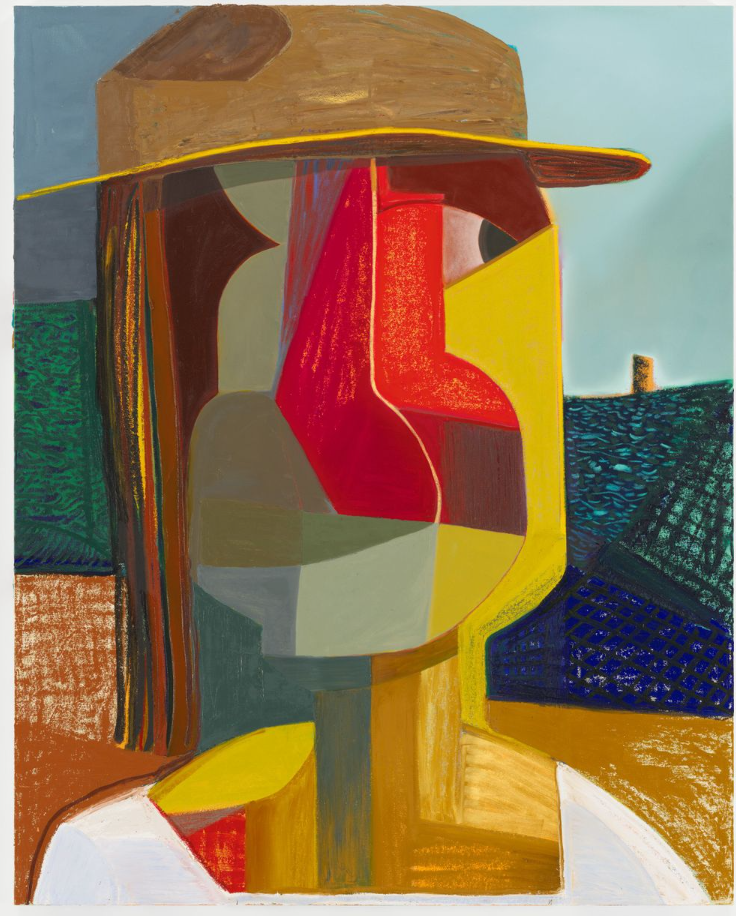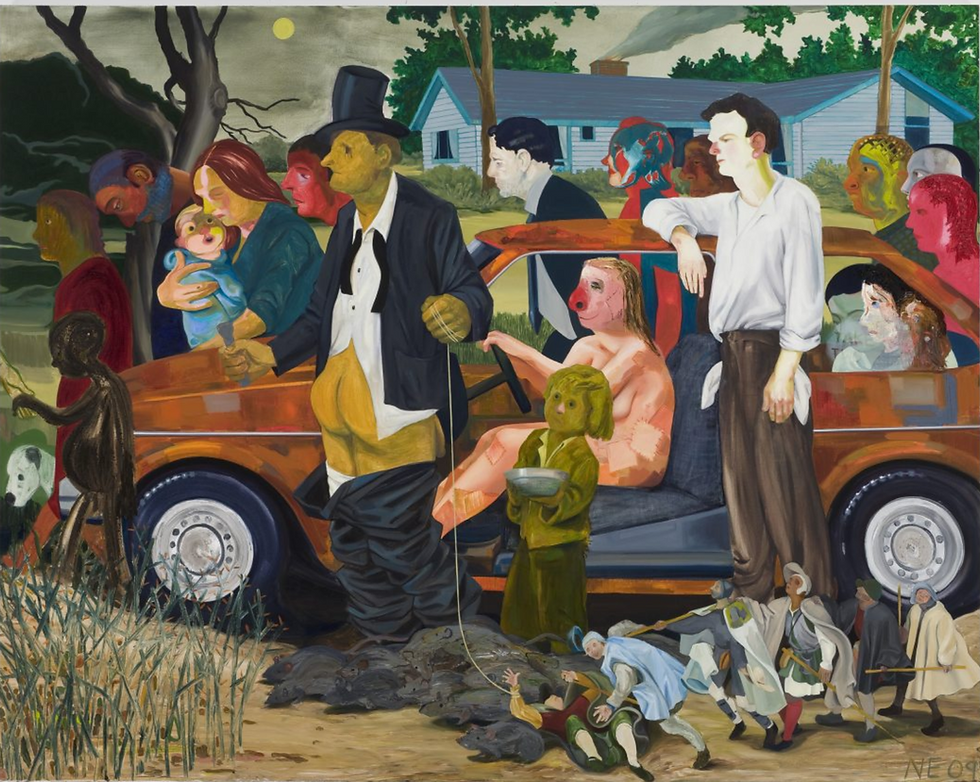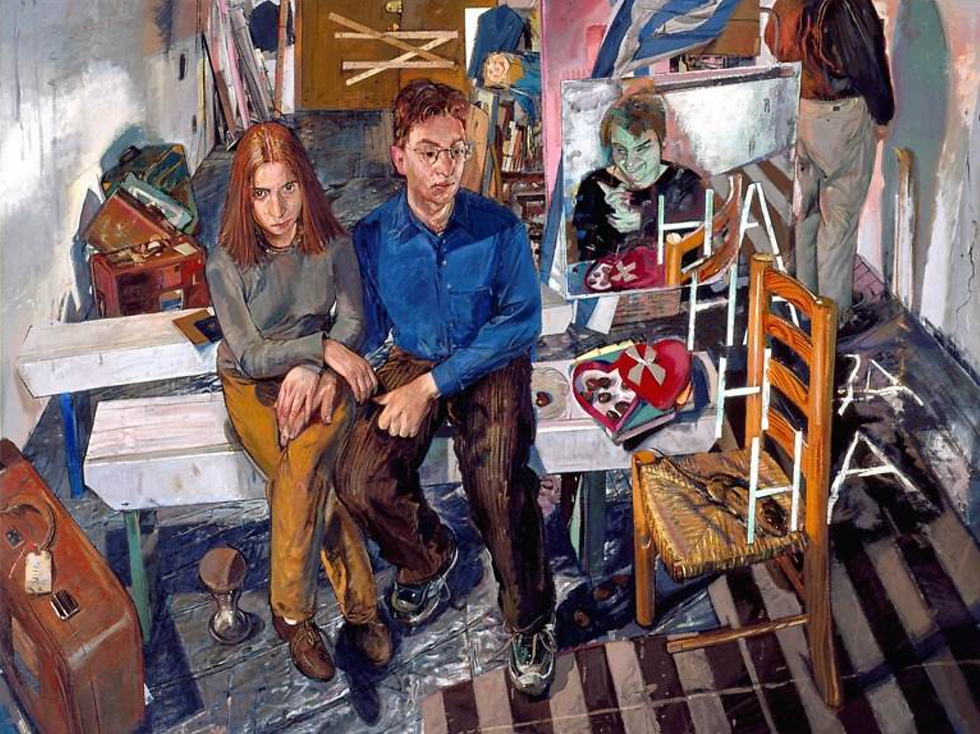Absurdism, Reality, and Works of Nicole Eisenman and Jerome Witkin
- haleyindorato
- Jul 26, 2024
- 3 min read
ab·surd·ism
intentionally ridiculous or bizarre behavior or character
the belief that human beings exist in a purposeless, chaotic universe
It's human to fight against purposelessness (I'll save the existentialism for another day). Like many people, I've been upset with the events of the world. Lately turning into the self (which can be hard as well) to avoid thinking about outside horrors. I want to find some sense of order in the world, but there is no order. Even nature is chaos. So I try to find logic in painting. As a result, I feel nonsensical or ridiculous situations/scenes in painting make perfect sense. I've had a desire to capture some type of truth about human experience through an absurd obviously false painting.

My work isn't trying to change the world or anyone's opinions. I'm just trying to make great paintings. I'm always drawn to painting about life because I search for beauty and truth. However, we're living in a world that has multiple levels of reality: experiences, actual, physical, digital, perceives. And then the question of truth. It seems truth these days is relative as well. Why do I care, does it even matter? I don't think there's a correct answer and art doesn't need to provide answers. I'm really hoping to visually explore the chaotic; contradictory human experience.

I'm looing a lot to artists like Nicole Eisenman and Jerome Witkin to help myself figure out where to start. I think a lot about Eisenman's work. Her paintings stem from personal experiences, larger social issues, arti history, and can be serious and comical at the same time. She paint in a wide range of styles. Often ending up in a middle ground between reality and distortion/abstraction. That middle ground is something I'm still trying to find.

Stylistically, I tend to paint and often want to paint more like Witkin. More realistic, but still lots of painterly marks and texture. It's hard to find the range of Witkin's work online, but I encourage everyone in the Rochester area to visit the Memorial Art Gallery and see his piece, "Breaking the Pose" (1986). It's one of my favorite paintings at the gallery .
Conceptually, I'm also very drawn to Eisenman and Witkin's work. They both use figures who interact with their environments. They are often very emotive works as well. More so for Witkin, but there is a lot of anxiety and turmoil and chaos that can be felt from these paintings.

I came across a quote from Eisenman which sums up the reason I keep returning to the figure:
"I draw from the world around me, what I know. I pull my friends and family into my paintings... I paint the figure because I know the world through my body. And I understand my desires and my anxieties through my body and the desires and anxieties of our culture. I think the body can hold so much, it can be a site for just exploring the paint in or it can hold metaphorical and allegorical meanings. It's just wide open."

I'm at a point right now where I just need to make paintings to work through how to express these ideas. The most difficult things for me right now is just having the space. For now I'll continue looking to these artists as well as others for inspiration. We have similar interests of what to paint and yet since we are all different people with different lived experiences, it all comes out in our own unique ways. To me, that's the reason to keep painting what we have been painting for hundreds of years: to capture change, similarities, and connection of our interests and struggles across lifetimes. Right now for out current time, chaotic and weird is the only thing that makes sense.

Originally published in the May 2024 edition of my newsletter, "From the Artist's Studio"




Comments